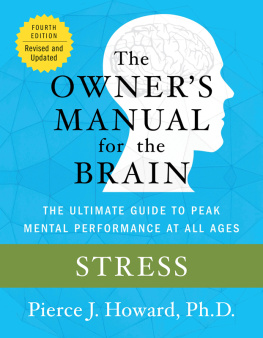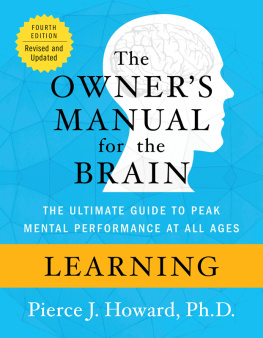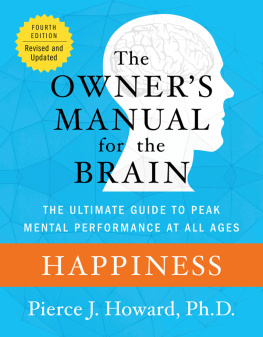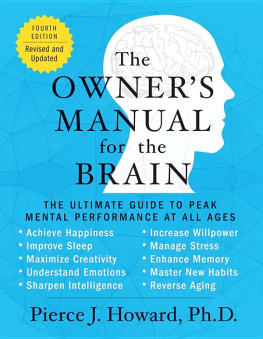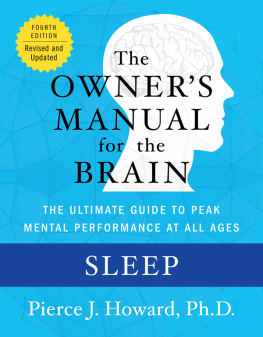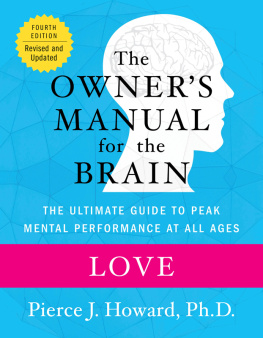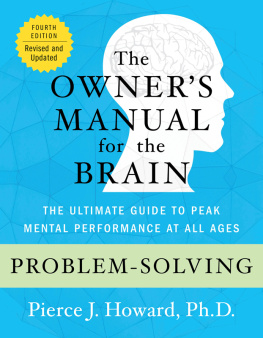E motion turning back on itself, and not leading on to thought or action, is the element of madness. John Sterling | The Unrelenting Fire Alarm |
E motion, as we defined it in the last chapter, is action resulting from situations that enhance or threaten a goal. When ones goal is substantially obstructed, the specific emotion that results is stress. The greater or more threatening the obstruction, the higher the stress. Stress that is sustainedeither low-level stress over a long period or high-level stress over a shorter timeleads to burnout, which is, at its most extreme, the inability to feel any emotion at all, a total loss of motivation.
When one senses that ones goal is being blocked, the something that serves as the obstacle is called a stressor. Put another way, stress occurs when the bodys normal homeostasis has been disturbed (Sapolsky, 1994). Stressors can be anything from fear-arousing enemies to anxiety-arousing fantasies, from flat tires that prevent you from getting to your childs soccer game, to invitations to go on a much desired date or other social outing when you must complete an assignment with an imminent deadline. Stressors are not intrinsically good things or bad thingsthey simply get in the way of working toward your goal. The more important the goal and the more potent the stressor, the greater the felt stress. The stress itself is an emotion, or rather typically a blend of emotions. As you recall, earlier we defined emotions as feedback that were proceeding on target toward our goal (positive emotions), or that were being obstructed with respect to our goal (negative emotions). However, inasmuch as stressors can be joyful as well as saddening, the emotion of stress itself can include both positive and negative emotions in one blend. For example, the emotional stress you feel when your grandchild comes to visit when youve much work to dojoy mixed with resentment and dread. Events that normally are pleasing can be stressfulan invitation for sexual play from your partner when you must get a good nights sleep for an important early morning meeting.
Ones perception of an event or situation as goal-deterring is crucial in determining its actual effect as a stressor. Woody Allen has said, Eighty percent of success is showing up. Accordingly, 80 percent of the effect of a stressor is ones perception of it as goal-deterring. If I do not perceive an event as keeping me from pursuing and attaining my goals, I do not perceive it as stressful. Stress, then, is in the eye of the beholder. The critical test for a situations having achieved major stressor status is whether the individual feels out of control. Stress is the point at which an event or circumstance makes the individual say, I have lost control of my destiny. Or, as Chinua Achebe borrows from Yeats in the title of his novel, Things fall apart. More fully:
Turning and turning in the widening gyre
The falcon cannot hear the falconer;
Things fall apart; the center cannot hold;
Mere anarchy is loosed upon the world.
William Butler Yeats, The Second Coming
Just as the falconer feels the falcon slipping out of reach, so the stressed individual feels lifes goals falling below the horizon, out of sight. There is no light at the end of the tunnel. There is no balm in Gilead. Things are out of control.
Stressors are not only negative and hostile, as when we are evicted from a home; they may also be positive and friendly, as when we move into a new home. In both cases, prolonged stress can be harmful, causing us to feel the need to get away from the stressor.
When stress occurs, our bodies mobilize for one of the three Fs: freeze, fight, or flee (the fight-or-flight response). This reaction includes
Dilation of the pupils, for maximum visual perception even in darkness
Constriction of the arteries, for maximum pressure to pump blood to the heart and other muscles (the heart goes from one to five gallons pumped per minute)
Activation of the adrenal gland to pump cortisol, which maintains pupil dilation and artery constriction by stimulating the formation of epinephrine and norepinephrine, sensitizing adrenergic receptors, and inhibiting the breakdown of epinephrine and norepinephrine
Enlargement of the vessels to the heart to facilitate the return flow of blood
Metabolism of fat (from fatty cells) and glucose (from the liver) for energy
Constriction of vessels to the skin, kidneys, and digestive tract, shutting down digestion and maximizing readiness for the fight-or-flight response
Control of this process lies in the hypothalamus, which acts as a control console. Stimulation of the front part of the hypothalamus calms the emotions (the parasympathetic nervous system response); stimulation of the back section activates the mobilization processes (the sympathetic nervous system response). This is known as the general adaptation syndrome (GAS). The term originated with Hans Selye (1952); a complete and more technical, but highly readable, description of it can be found in R. Williams (1989).
Normally, stress comes and goes. Fears and anxieties, for most of us, subside shortly after their onset. Ira Black (1991) reports that a sympathetic nervous system stimulation of 3090 minutes can result in a 200300 percent increase in enzyme and impulse activity for 12 hours to three days and, in some cases, for up to two weeks. But what happens when fears and anxieties dont subside? What happens when stressors dont go away and the feelings of fear and anxiety persist over time? In a word, the high levels of cortisol become toxic. During this sustained period of GAS, when the posterior hypothalamus is active, the performance of the immune system (see topic 7.2) is seriously impaired. Minor results of this stress-related impairment include colds, flu, backaches, tight chest, migraine headaches, tension headaches, allergy outbreaks, and skin ailments. More chronic and life-threatening results can include hypertension, ulcers, accident-proneness, addictions, asthma, infertility, colon or bowel disorders, diabetes, kidney disease, rheumatoid arthritis, and mental illness. Killers that can result include heart disease, stroke, cancer, and suicide. In addition, chronic stress can result in energy depletion, depression, insecurity, impotence or frigidity, apathy, emotional withdrawal, insomnia, chronic fatigue, helplessness or hopelessness, anxiety, confusion, lack of concentration, and poor memory.
Thomas Kamarck, of the University of Pittsburgh, and his colleagues report that in a study of 901 Finnish men, those exhibiting the highest mental stress also showed blood vessel blockages similar to those associated with smoking and elevated cholesterol ( Circulation, December 2, 1997, pp. 38423848). Further research is under way to determine the degree to which prolonged stress causes plaque buildup in the arteries, leading to higher risk for stroke and atherosclerosis. Sonya Lupien of Montreals McGill University has found that prolonged high levels of cortisol shrink the hippocampus, causing memory impairment ( Nature Neuroscience, May 1998). What this suggests is the following process:
1. Prolonged stress produces sustained high levels of cortisol.
2. As a result, the hippocampus shrinks.
3. The production of new neurons is significantly reduced.
4. Memory, mood, and other mental functions are affected.
John D. MacArthur (Stress and Your Brain) summarizes the physical effects of stress in this manner:
The sympathetic nervous system (SNS) is hierarchically dominant over the parasympathetic nervous system (PNS) and will not yield to the PNS until some resolution takes place (fight, run, meditate, etc.).
At the first sign of a stressor, the adrenal gland releases adrenaline, only enough to get your attention (also associated with flashback memories).
Next page
